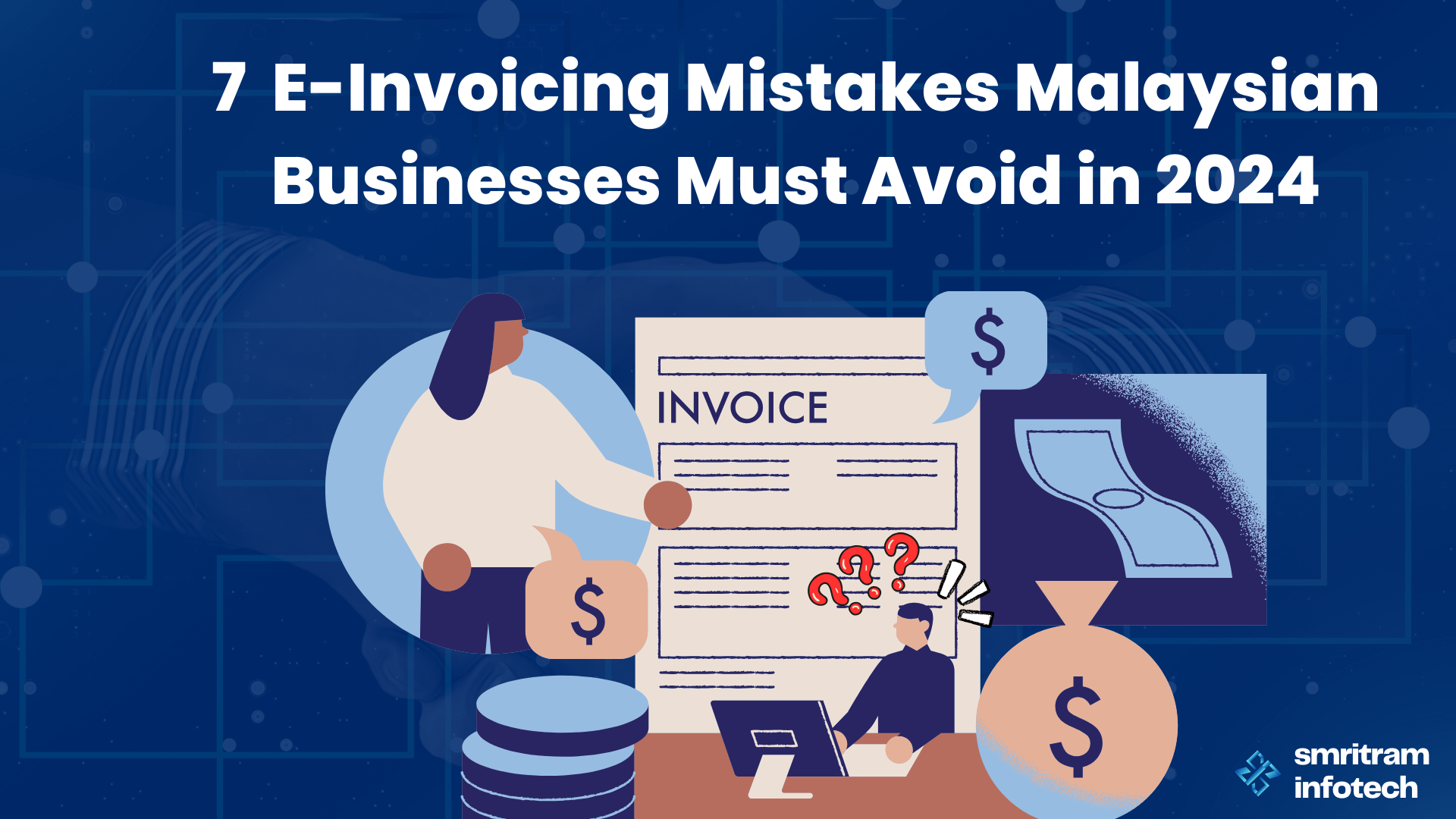-
Sep, Fri, 2024
7 E-Invoicing Mistakes Malaysian Businesses Must Avoid in 2024
Introduction
As Malaysia continues to roll out mandatory e-invoicing requirements for businesses in 2024, it’s crucial to be aware of common pitfalls that could hinder compliance and efficiency. E-invoicing, while offering numerous benefits, also presents challenges that businesses must navigate carefully. Here are seven common mistakes to avoid when implementing e-invoicing for your business in Malaysia:
1. Inadequate System Integration
One of the most significant challenges in e-invoicing is ensuring that your existing ERP or accounting system is fully integrated with e-invoicing platforms. Failure to do so can result in data discrepancies and delays. Make sure your system is compatible with the e-invoicing standards and platforms mandated by Malaysian regulations.
Resource: Malaysian Inland Revenue Board – E-Invoicing Updates
2. Ignoring Compliance Requirements
E-invoicing in Malaysia comes with specific compliance requirements, including format standards and tax regulations. Ignoring these requirements can lead to penalties and legal issues. Stay updated on the latest guidelines and ensure your e-invoicing solution adheres to them.
Resource: Malaysian E-Invoicing Guidelines
3. Overlooking Data Security
Handling sensitive financial information electronically requires robust security measures. Many businesses underestimate the importance of data protection, risking data breaches and fraud. Implement strong security protocols and ensure your e-invoicing provider prioritizes data security.
4. Failing to Train Staff
Transitioning to e-invoicing can be challenging if your team is not properly trained. Inadequate training can lead to errors and inefficiencies. Invest in comprehensive training programs for your staff to ensure they are well-versed in the new processes and technologies.
5. Not Testing the System Thoroughly
Before fully adopting e-invoicing, it’s essential to test the system extensively. Skipping this step can result in unforeseen issues once the system is in full operation. Conduct thorough testing and address any issues before going live.
6. Neglecting Integration with Business Partners
E-invoicing effectiveness depends on seamless integration with your business partners’ systems. If your partners are not equipped for e-invoicing, it can cause disruptions. Coordinate with your partners to ensure they are prepared for the transition.
Resource: E-Invoicing Integration Strategies
7. Ignoring Ongoing Compliance Monitoring
E-invoicing regulations and technology are constantly evolving. Failing to monitor and adapt to these changes can lead to compliance issues. Regularly review your e-invoicing processes and stay informed about any updates or changes in regulations.
Resource: Continuous Compliance for E-Invoicing
Conclusion
Implementing e-invoicing is a significant step for businesses in Malaysia, offering numerous benefits like improved accuracy and compliance. However, avoiding common mistakes is crucial to ensure a smooth transition. By being aware of these pitfalls and taking proactive steps, you can enhance your invoicing process and avoid costly errors.
Ready to get started with e-invoicing? At Smritram Infotech, we offer tailored solutions to help you navigate this transition seamlessly. Contact us today for a demo or consultation, and let’s ensure your e-invoicing process is both efficient and compliant. Don’t wait—take action now to set your business up for success!
Feel free to share this post with your network and let us know if you have any questions or need further assistance!
FAQ: E-Invoicing in Malaysia
1. What happens if I make mistakes with e-invoicing?
Mistakes in e-invoicing can lead to fines, legal problems, or payment delays. Errors in your invoices might also increase your admin work and affect your relationships with business partners. It’s important to get things right to avoid these issues.
2. How can automation help avoid errors in e-invoicing?
Automation reduces errors by taking over manual data entry, which is often prone to mistakes. Automated systems handle invoice data more accurately and quickly, making the whole process smoother and reducing the chance of errors.
3. Why is a digital signature important for e-invoicing?
A digital signature confirms that an invoice is genuine and hasn’t been altered. It ensures that the sender is verified and adds an extra layer of security to protect against fraud.
4. What should I do if my e-invoice gets rejected?
If your e-invoice is rejected, check the reason given by the system. Common issues might be formatting mistakes or incorrect data. Fix the problems, and resend the invoice. It’s also a good idea to contact the recipient to ensure everything is correct.
5. How can Smritram Infotech’s e-invoicing solution help me?
Smritram Infotech offers an e-invoicing solution that makes invoicing easier and ensures you meet Malaysian regulations. Our system works well with your existing tools and has strong security features. We also provide support, including training and demos, to help you get started. With our solution, you’ll save time, avoid errors, and make your invoicing process more efficient.


